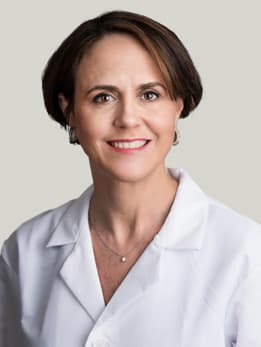Clearing the air: 8 lung cancer myths, debunked

Lung cancer is the second most common cancer in men and women in the United States. It is also the country’s leading cause of cancer death.
But this disease is often misunderstood, with inaccurate or incomplete information sometimes leading people to skip screenings or settle for less effective care.
The University of Chicago Medicine offers nationally recognized lung cancer specialists who use minimally invasive surgery, precision radiation, advanced immunotherapy and targeted therapies to deliver the best possible outcomes.
There are many new medicines available for lung cancer, and treatments have changed dramatically. Not a single patient is treated the same way others were 10 years ago.
As a thoracic surgeon at UChicago Medicine, I work to help clear up the misconceptions about lung cancer — and to ensure every patient understands their diagnosis and options. Here are a few common myths:
Myth: Only smokers get lung cancer
Fact: While most lung cancer occurs in people who are current or former smokers, about 15% of cases in the U.S. develop in people who have never smoked or smoked fewer than 100 cigarettes in their lifetime.
Nonsmokers who develop lung cancer are more likely to be women, have a family history of lung cancer and have tumors that can be treated with targeted therapies.
Myth: Lung cancer always causes symptoms early on
Fact: There are almost never symptoms with early-stage lung cancer. Patients usually develop symptoms — from a cough, chest discomfort and fatigue to bone pain, headaches and weight loss — when tumors are large or have spread to remote organs. The only way to reliably find lung cancer in its early stage is with a CT scan.
At UChicago Medicine, we've built a team of lung cancer experts with more combined expertise than any other lung cancer physician team in Chicago. Our pulmonologists can biopsy some cancers and even treat hidden airway cancers, all without surgery.
Myth: Lung cancer is always fatal
Fact: The overall cure rate for lung cancer in the U.S. is roughly 26%. Survival rates depend upon your stage at diagnosis, from about 75% when the cancer is stage 1, to about 9% when it has spread to the other sites.
Most patients are still diagnosed late because early-stage patients do not have symptoms and lung cancer screening participation is limited.
Myth: If you quit smoking, your lung cancer risk immediately matches that of a non-smoker
Fact: First, congratulations if you've quit! Your risk factor definitely lessens with time, but it will never be that of a nonsmoker's.
Screening guidelines recommend yearly low-dose CT scans for people who are 50 to 80 years old, have a history greater than 20 “pack-years” (pack-years are determined by the number of packs smoked per day multiplied by the number of years you smoked) and who have quit smoking within the past 15 years.
After 15 years, your risk factor drops enough that our current guidelines do not recommend routine screening.
Myth: Screening isn't needed if you feel healthy
Fact: Lung cancer usually has no symptoms until it's incurable. We can't actually feel our lungs; nerves in the lungs only measure oxygen but do not sense pain.
That's why most patients with curable lung cancer feel great, and it’s why you shouldn't skip a screening if you're in a high-risk group.
Myth: Surgery is the only treatment for lung cancer
Fact: Surgery is the primary treatment for early-stage lung cancer, but most patients diagnosed at a later stage get a combination of treatments — surgery or radiation in combination with chemotherapy, immunotherapy or a targeted therapy that attacks the cancer cells based on their unique features, like genetic mutations.
If your cancer has spread beyond the lungs, medicines will likely dominate your treatment, although we increasingly operate on patients whose cancer has spread. Surgically removing or giving radiation to the tumor in the lung can prolong life of some patients who respond well to initial medications, according to research.
Myth: You can't exercise or be active during lung cancer treatment
Fact: Our advice is just the opposite: We want all of our patients to remain as active as possible during treatment. We recommend all our patients follow an exercise program because it's associated with better outcomes in cancer care.
We're not asking patients to run a marathon; we're asking them to walk for at least 10 minutes per day and to remain at least as active as they were before starting treatment. This is also an incredibly helpful thing that friends and families can do for lung cancer patients — simply walk with them each day.
Myth: Treatment means you're completely cured
Fact: Patients aren't cured of any cancer until they're disease-free and require no treatment for roughly five years. Many early-stage patients will have an excellent prognosis following treatment; we typically follow them closely for five years to rule out recurrence.

Jessica Donington, MD, MSCR
Jessica S. Donington, MD, is an expert thoracic surgeon who treats the full spectrum of lung, esophageal and mediastinal conditions. Her focus is on the comprehensive and multidisciplinary care of benign and malignant chest diseases.
Learn more about Dr. Donington
Get Screened for Lung Cancer
Lung cancer screening can help detect lung cancer in its early stages, when it's easier to treat. UChicago Medicine is a designated Lung Cancer Screening Center and offers lung cancer screening at several convenient locations throughout the Chicago area.
Learn more about lung cancer screening